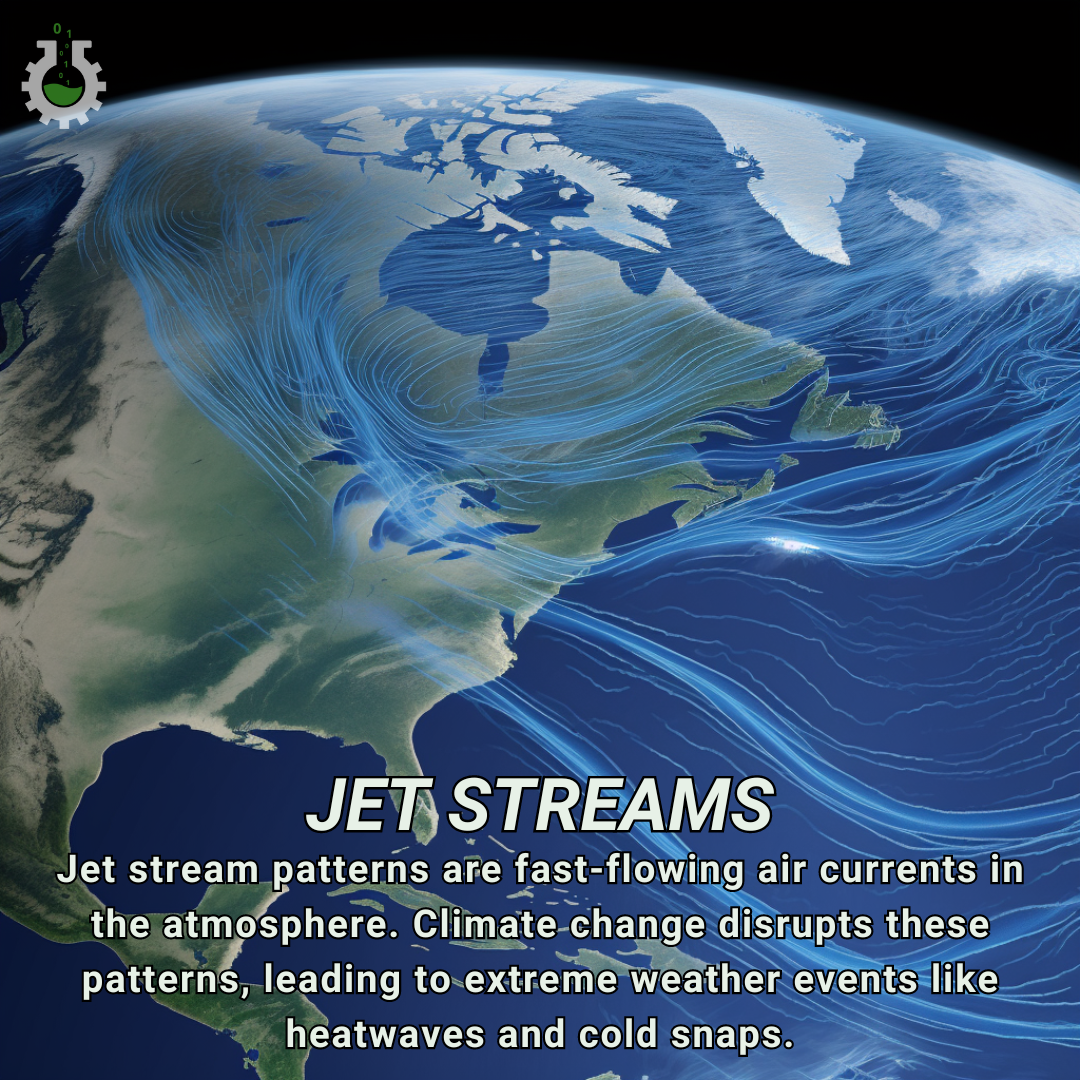June 5, 2024
Climate Change Poster Collection of the Day – Jet Streams
Book a Demo
Today’s Climate Change Poster Collection highlights Jet streams. Jet streams are narrow bands of strong winds in the upper levels of the atmosphere that flow from west to east around the globe. These powerful air currents, typically found at altitudes of about 9 to 16 kilometers (30,000 to 52,000 feet), can reach speeds of over 160 kilometers per hour (100 miles per hour). Jet streams are primarily driven by the temperature differences between the equator and the poles. The greater the temperature contrast, the stronger the jet streams. These atmospheric rivers play a critical role in shaping weather patterns, influencing everything from storm tracks to temperature distributions.
However, the advent of climate change is increasingly disrupting this delicate balance, leading to significant alterations in jet stream behavior. One of the most profound impacts of climate change is the rapid warming of the Arctic, occurring at twice the global average rate. This phenomenon, known as Arctic amplification, reduces the temperature gradient between the equator and the poles, consequently weakening the jet streams. A weakened jet stream tends to meander more and move more slowly, resulting in prolonged and often extreme weather patterns. For instance, a sluggish jet stream can cause a heatwave to linger over a region, leading to droughts and wildfires, or it can result in extended periods of heavy rainfall, causing devastating floods.
Furthermore, these altered jet stream patterns can shift weather systems, affecting precipitation and temperature distributions, which in turn impacts agriculture, water resources, and ecosystems. The disruptions in the polar vortex, a large area of low pressure and cold air surrounding the poles, are also linked to the weakening jet stream. When the polar vortex weakens, it can send blasts of cold Arctic air into mid-latitude regions, causing severe winter weather. For example, during the winter of 2013-2014, a weakened polar vortex led to the infamous “polar vortex” event in North America, bringing record-breaking cold temperatures to many parts of the United States.
Numerous scientific studies have established correlations between Arctic warming and changes in jet stream behavior, although the exact mechanisms and future projections remain complex and an active area of research. Real-world examples, such as the 2010 Russian heatwave, the 2013-2014 North American cold wave, and the 2019 European heatwaves, illustrate how altered jet stream patterns are already contributing to extreme weather events. These events not only cause immediate damage but also have long-term economic and social impacts, affecting everything from food security to infrastructure resilience.
One of the challenges in understanding and predicting these changes lies in the complexity of the interactions between various components of the Earth’s climate system. The atmosphere, oceans, ice sheets, and land surfaces all interact in ways that can amplify or mitigate the effects of climate change on jet streams. For instance, the melting of Arctic sea ice not only contributes to Arctic amplification but also affects ocean circulation patterns, which in turn can influence jet streams. Similarly, changes in land use and vegetation cover can alter surface temperatures and humidity levels, further complicating the picture.
Understanding these changes is vital for improving climate models and preparing for future climate impacts. Enhanced climate models that better capture the interactions between different components of the climate system can provide more accurate predictions of future jet stream behavior and its implications for weather patterns. This, in turn, can help policymakers and communities develop more effective strategies for mitigating and adapting to the impacts of climate change.
As we continue to grapple with the multifaceted challenges posed by climate change, it becomes increasingly clear that the behavior of jet streams is a critical piece of the puzzle in predicting and mitigating the effects of our rapidly changing climate. Addressing these challenges will require a concerted effort from scientists, policymakers, and the public to reduce greenhouse gas emissions, enhance climate resilience, and protect the delicate balance of our planet’s climate system. The stakes are high, but with a deeper understanding of the connections between climate change and jet stream patterns, we can better navigate the uncertain future that lies ahead.
Discover an inspiring collection of climate change poster.



